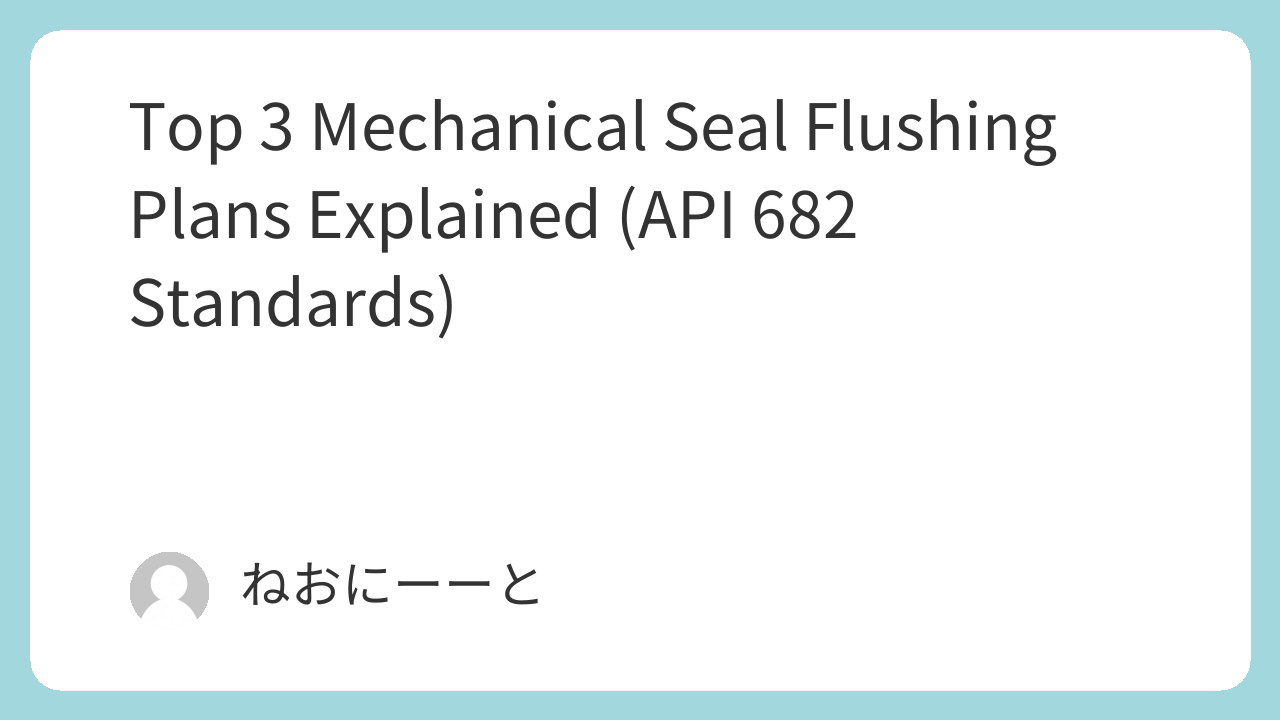In chemical plants, centrifugal pumps are everywhere—and where there are pumps, mechanical seals are close behind.
But a mechanical seal alone isn’t enough. For it to function safely and efficiently, you need the right flushing plan.
Without it, the seal could overheat, clog, or even leak hazardous fluids.
This article gives you a practical, engineer-friendly guide to the three most commonly used API 682 flushing plans:
- Plan 01 (Internal)
- Plan 11 (External Return)
- Plan 32 (External Injection)
Whether you’re designing new piping or maintaining existing pumps, this knowledge is essential.
📘 Summary of Contents
- What Is API 682?
- Plan 01: Internal Flushing
- Plan 11: Self-Flushing with External Piping
- Plan 32: External Fluid Injection
- Cooling Methods: Water or Process-Compatible Solvents
- Pros, Cons, and Cost Implications
- Energy Efficiency Concerns
- Final Considerations
🧠 Main Article Summary
API 682, developed by the American Petroleum Institute, standardizes mechanical seal systems for pumps in the chemical and petrochemical industries.
Here’s a breakdown of three common flushing methods:
🔹 Plan 01 – Internal Flushing
- Uses high-pressure fluid from the pump discharge
- Fluid is routed internally within the pump
- Simple, but prone to clogging in slurry applications
🔹 Plan 11 – External Return (Self-Flushing)
- Similar to Plan 01, but uses external piping to circulate fluid
- Offers easier maintenance (e.g., pipe cleaning or heat exchanger installation)
- Used when the risk of internal blockage is non-negligible
🔹 Plan 32 – External Injection
- Injects clean, external fluid (water or process solvent) directly to the seal
- Ideal for abrasive or dirty process fluids (e.g., slurry)
- Expensive and complex due to added piping, valves, and automation
💧 Cooling Fluid Options
- Water is simple but risks contamination
- Compatible solvents (co-fluids) offer safer process integration
- Always coordinate with process engineers to avoid unintended reactions
⚠️ Downsides and Costs
- Construction costs (pipes, valves, control systems)
- Water waste: e.g., 5 L/min → 7200 L/day
- Energy consumption for pumps, controls, and cooling systems
- Automation needed for energy efficiency and control
✅ Conclusion
For chemical plant engineers, understanding flushing plans isn’t optional—it’s essential.
Key takeaways:
- Plan 01: simplest, internal circulation
- Plan 11: external piping, more flexibility
- Plan 32: external fluid injection for harsh conditions
- Choose based on process fluid cleanliness, cost, and energy impact
In batch chemical plants, Plan 11 is usually sufficient. Plan 32 is reserved for challenging cases like slurry.

Comments